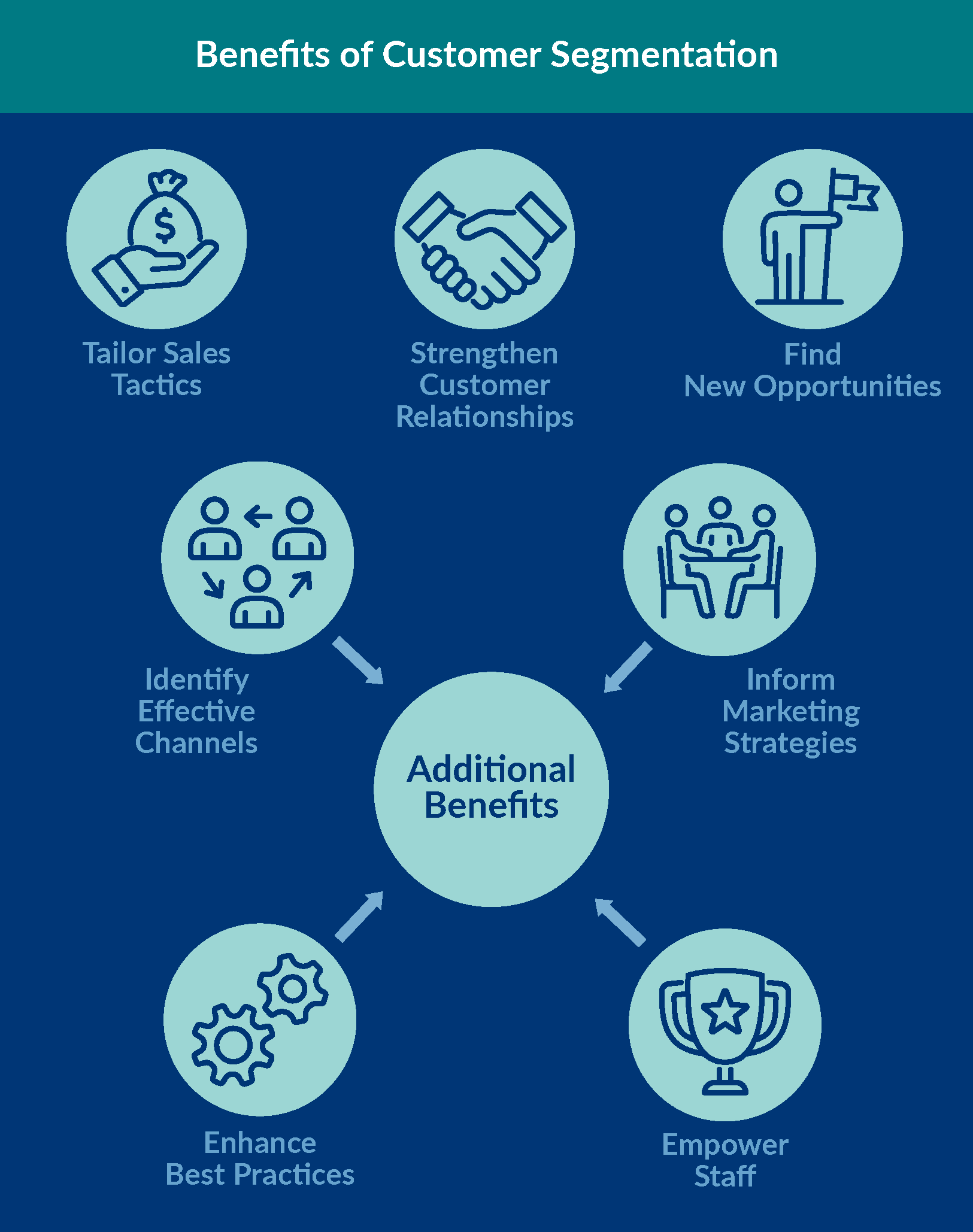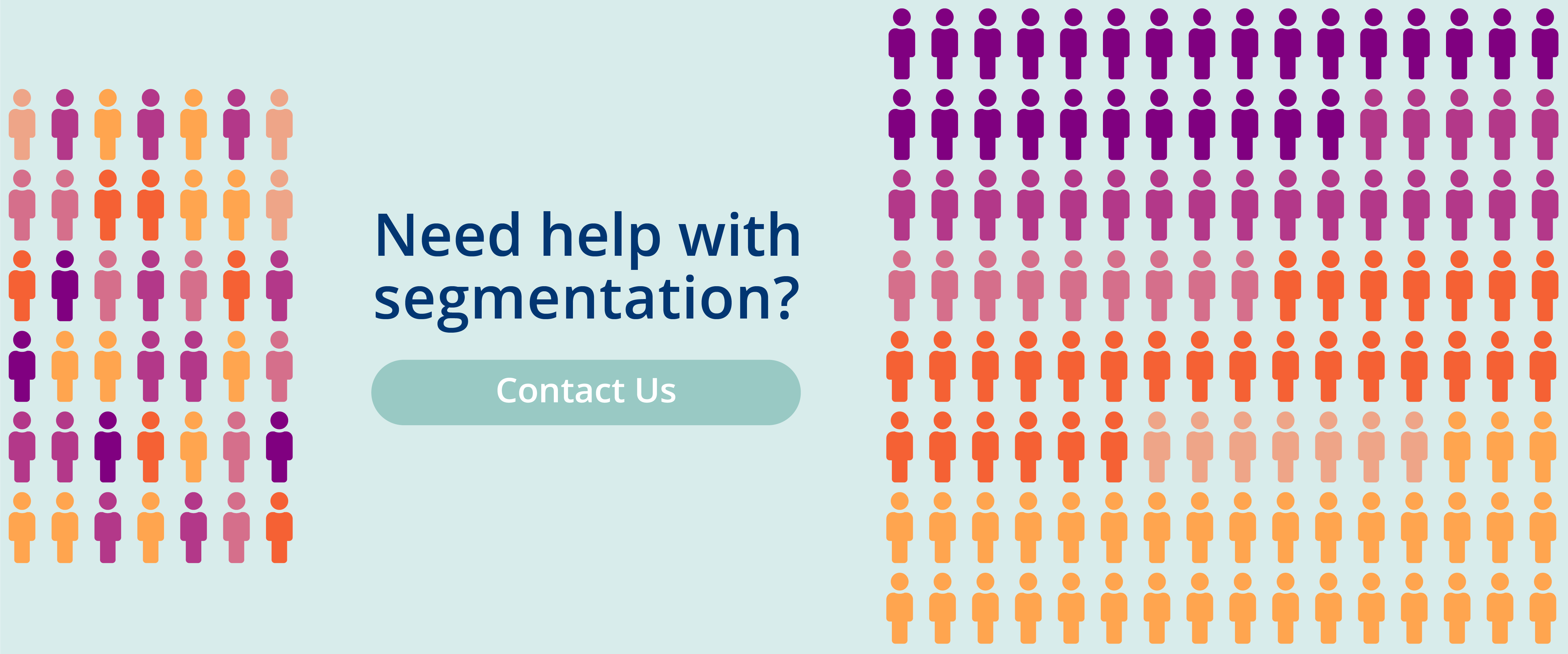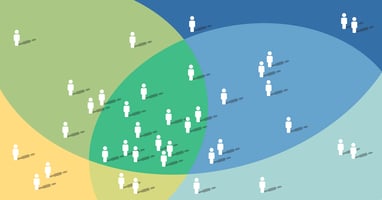In today's competitive marketplace, understanding what makes your target market tick is more...
What Is Customer Segmentation?
Customer segmentation separates an organization’s audience into distinct groups and categorizes them based on shared characteristics. Whether the audience may be current, former, or others, they are sorted based on shared behaviors, preferences, or other actions. Customer segments are crucial to understanding each customer’s unique needs and informing marketing strategies. Read on to learn more about what customer segmentation is and how organizations can effectively employ it.
Benefits of Customer Segmentation
Customer segmentation helps organizations tailor their sales and marketing efforts to specific customers, strengthen customer relationships by better understanding their needs and how their services meet them, and identify new opportunities for products, services, and updates to existing processes.Different groups of customers use various communication messages and methods. Understanding this can help organizations:
- Identify the most effective channel to reach customers,
- Inform future marketing strategies,
- Help employees prepare for challenges that different segments of customers might face,
- Inform troubleshooting best practices, and thereby
- Improve customer satisfaction.
Additionally, segmentation has many applications outside of marketing. For example, a research agency conducting a consumer survey on spending habits during a recession might group respondents into different segments based on their income and other factors.

How to Segment Customers
How an organization segments its customers or respondents entirely depends on what the organization is trying to achieve with its research. Customer segmentation focuses on who your respondents are, what they do, and what they want. Researchers must acquire quality data from effective surveys and other research methods to create helpful customer segments that enable them to make impactful decisions.
In order to have a solid segmentation, it is crucial to start with good-quality data. Without quality data, customer segmentations can be skewed. Research experts at IntelliSurvey can assist with questionnaire design and analytics to ensure quality data and proper segmentations that achieve our client’s goals.
Customer Segmentation vs Market Segmentation
While these two terms both describe effective business research tools, there are differences between the two. Market segmentation typically involves taking a look at the whole market from a broader scope. On the other hand, customer segmentation focuses on the buyer portion of the market.
Types of Customer Segmentation
Many customer segmentation models organize respondents into different categories, such as demographics, geography, behavior, technology, values, and needs. Learn more about the various types of customer segmentation below.
1. Attitudinal Segmentation
Attitudinal segmentation models group together people based on their attitudes toward the product category. This segmentation method analyzes consumer lifestyle, shopping behavior, product needs, and other category specifics.
Attitudinal customer segmentation also helps organizations analyze and understand user habits across different groups. Some questions that this segmentation model aims to answer include:
- What is the most important consideration when buying a product or service?
- How do you rate brands X, Y, and Z?
- What habits are users forming?
2. Demographic Segmentation
Demographic segmentation uses statistics that describe populations based on their attributes and other characteristics. Demographic customer segmentation models analyze factors such as age, gender, education, income, or marital status.
3. Geographic Segmentation
Geographic customer segmentation models focus on where customers are located. This segmentation model is helpful to organizations that want to identify different markets to pursue based on location. Geographic segmentation models analyze factors like region, country, city, or population size.
4. Sample Cuts Segmentation
Sample subgroups are one of the easiest segmentation methods. Sample subgroups are defined directly by bucketing or crossing questions. For example, with this segmentation design, respondents can be organized into groups based on categories, such as homeowners older than 55 and consumers who only bought Coke in the previous year.
5. Needs-Based Segmentation
Needs-based segmentation models help organizations identify what services or products they must provide to meet the specific needs of different customer groups. Organizations can gather needs-based information by identifying what features, services, or products users would like to see in the future through customer experience surveys. These surveys ask questions such as:
- What features do our competitors offer that you would like to see in our product?
- What would make you choose our service over a competitor’s?
- What features do customer groups gravitate to most?
- What features do customer groups seem to want the least?
- How do users feel about these features?
6. Value-Based Segmentation
Value-based segmentation models look at how much each customer group contributes to the business. For example, value-based segmentation can identify demographic groups with the most subscriptions to an organization’s service. Value-based customer segmentation can help companies determine which segments to nurture and pour additional marketing resources. This also helps brands identify what customer segments purchase more frequently and spend the most money.
Customer Segmentation Examples
Segmentation by Age and Gender
Age and gender are demographic segmentation models that serve as effective starting points for organizations that want to begin creating different customer segments. When segmenting users by age and gender, organizations must ensure that groups are inclusive by featuring plenty of choices on their surveys. Effective survey-taking ensures that customers are accurately segmented into groups where they feel the most comfortable.
Segmentation by Location
Location is a geographic customer segmentation model that informs organizations about where their respondents are and how they can reach them. Customer segments in different areas help businesses understand how to market their products and services in various locations. Location segments can tell organizations which regions, countries, and cities they are performing well in and which require more attention.
Segmentation by Customer Service Needs
Customer service needs segmentation is a needs-based segment model. Customer service needs segments to delve into what customers need to succeed at using a product or service. This segmentation model leverages information from customer experience surveys to help organizations identify if FAQs or other support documentation should be developed to help future customers avoid problems that plagued other users.
This segmentation model helps organizations create a successful NPS program. Businesses can segment promoters, passives, and detractors to keep promoters happy, push passives to become promoters, and address any issues that detractors have.
Segmentation by Purchase Criteria
The number of purchases and purchase value are examples of value-based segmentation models. These segment models tell businesses which customer groups are spending the most on their products and services. Purchase value helps organizations determine how their products and services are valued compared to their competitors.
These segmentation models help businesses determine each customer group’s value and which groups they should nurture their relationships with. Loyal customers will spend more and purchase more frequently to support a business, making them more valuable to a business.
![]()
Customer Segmentation With IntelliSurvey
By including several statements that respondents agree or disagree with that relate to their general attitudes toward a product category or industry, IntelliSurvey can create a segmentation utilizing factor and cluster analysis. We can also help design the segmentation questionnaire and run the analytics.
These segmentations are helpful in potentially identifying consumer groups that are more likely to buy from a particular brand or retailer or to identify a potential white space within a market. IntelliSurvey’s approach includes an iterative two-step process.
First, we run a factor analysis to determine which attitudinal statements might be best for creating distinct consumer segments. Next, we use those attitudinal statements as input variables to run a cluster analysis to segment respondents into a set number of groups.
Occasionally, the need to segment an audience won’t emerge until later stages of the research process, when the questionnaire has been finalized without an attitudinal battery and data has already been collected. In those cases, we can still use analytic techniques such as CHAID to parse through other variables to see what drives the most differentiation in audience subgroups. While not as ideal as designing the study for segmentation from the start, this can still provide useful insights into these subgroups’ defining characteristics and behaviors.
Cut-based Segmentations
IntelliSurvey’s portal offers a variety of reporting formats to make it even easier to segment an organization’s consumer groups. For example, topline reports display results for every question in easy-to-understand formats. Each question is customized in this format to manipulate the data into several metrics.
Crosstab reports are built into IntelliSurvey’s architecture and can seamlessly run directly in-portal to display in real-time. With this type of report, IntelliSurvey allows organizations to easily keep a pulse on each of their consumer segments.
In addition to direct questioning metrics, IntelliSurvey can also help organizations track crucial data such as purchase funnel metrics, loyalty drivers, feature prioritization, and price sensitivity.
Closing Thoughts
Effective customer segmentation helps companies understand their customers and users better. This information plays a crucial role in market research and leverages quality customer feedback to inform future marketing decisions. Closely analyzing behavior across different customer segments can help organizations identify key areas to improve across their services and marketing efforts. Outside of marketing, researchers can employ segmentation methods to help them aggregate data from certain groups of respondents.
Surveys offer a cost-effective, efficient way to begin building your customer segmentation strategy. Target your customers more effectively and build powerful market insights using intelligent survey design – contact us today to learn how




